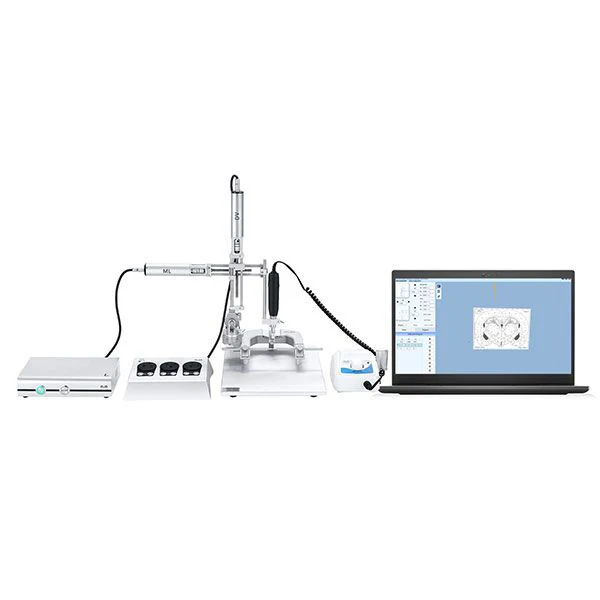A common question in neuroscience labs involves the functionality of modern positioning equipment. Specifically, can an automated stereotaxic instrument store multiple surgical coordinates? The capability to save and recall numerous coordinate points is a defining feature of a digital stereotaxic instrument, representing a significant advancement over manual systems.
How Coordinate Saving Functions
These digital systems are integrated with software that controls the instrument’s motors. After an initial calibration, a researcher can navigate the manipulator arm to a specific brain target. With a simple command, the three-dimensional coordinates (Anterior-Posterior, Medial-Lateral, and Dorsal-Ventral) for that location are saved into a patient or subject file within the software. This process can be repeated for all desired injection or recording sites during a planning session.
Recalling Points for Complex Procedures
For an experiment requiring interventions at several different brain regions, the researcher can access the saved file and select any of the stored coordinates. The automated stereotaxic instrument will then precisely drive the manipulator to each pre-defined point in sequence. This eliminates the need for manual adjustment between targets and reduces the potential for human error introduced by repeatedly reading vernier scales.
Enhancing Protocol Reproducibility
This memory function directly contributes to experimental consistency. The same set of coordinates can be reliably used across multiple subjects, ensuring uniform targeting. Furthermore, complex protocols with multi-step coordinate plans can be archived and reused in future studies. The precision of a digital stereotaxic instrument is thus enhanced by this software-driven reproducibility.
The ability to save and recall coordinates on a digital stereotaxic instrument streamlines surgical planning and execution. This feature, available in systems provided by BPLabLine, supports researchers in performing sophisticated neurosurgical procedures with greater efficiency and accuracy, allowing them to focus more on the experimental outcomes.
